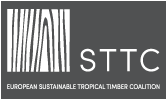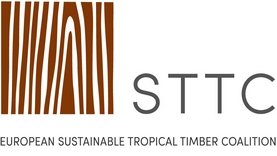
To mark its 70th anniversary, the International Tropical Timber Technical Association (ATIBT) is hosting a special forum at the 2022 Carrefour International du Bois in Nantes.
“It will be a major occasion for us, with a range of discussions, presentations and seminars,” said ATIBT managing director Benoît Jobbé-Duval. “Attending will be members from the tropical timber industry from Africa and Europe, experts from academia and ministers from Congo Basin countries and our donors. It will be an exciting event with considerable interest for the wider timber sector and we’re expecting a strong audience of show visitors and other delegates.”
The Forum will naturally cover ATIBT’s development and achievements over seven decades. But Mr Jobbé-Duval stressed the principal focus will be its current wide ranging activities and ambitions for the future. To further the environmental, technical and economic development of the tropical forest industry and grow the international market for its certified sustainable timber and wood products. “It will essentially be about our core objective, which to sum up is to grow the tropical forest economy by supporting good governance and helping increase the value of legally and sustainably certified forest and timber to avoid deforestation,” he said.
The rationale for the 1952 launch of ATIBT, at the instigation of the UN Food and Agricultural Organisation (FAO) and Organisation for Economic Co-operation and Development (OECD) was somewhat different. “Europe was in post-war reconstruction and its forests were depleted,” explained Mr Jobbé-Duval. “ATIBT was created to research and enhance the technical and logistical capabilities and develop the export capacity of the African tropical timber sector as a source of wood for Europe.”
The organisation, he added, worked closely with the French Tropical Forest Technical Centre (CTFT) to establish the technical performance of tropical species and their suitability for different applications and to help improve timber production. “Today we work on these and other technical issues with the French Agricultural Research Centre for International Development CIRAD, which integrated the CTFT and today operates worldwide,” said Mr Jobbé-Duval. “We also have a close association with Gembloux Agro Bio-Tech at the University of Liège and its professor of tropical forestry Jean-Louis Doucet and with technical centres in Africa.”
While some aspects of its technical activities remained constant, however, ATIBT’s role increasingly widened. Its focus turning ever more to enhancing forest maintenance as both an economic engine for tropical countries and an environmental resource for both them and the wider world. “In the Congo Basin, where we principally operate, the forestry sector is vital to national economies and the biggest employer after states themselves,” said Mr Jobbé-Duval. “As we move into the post-fossil fuel era, it will become even more important. Enhancing and developing the industry is key for producer countries’ future.” Sustainable forest management, he added, is central to maintaining both its economic and environmental value. ATIBT was involved in implementation of the first forest management plans in the 1990s. Into the 2000s it became increasingly focused on promoting forest and timber industry certification and its interlinked goals to enhance the environmental, economic and social performance of the sector.
Subsequently, it became involved in the development of the EU Forest Law Enforcement, Governance and Trade (FLEGT) initiative. It supports countries in their implementation of FLEGT Voluntary Partnership Agreements (VPAs) and associated timber legality assurance systems. It also works with timber businesses, and particularly small to medium-sized enterprises, in meeting the due diligence requirements of European importers under the EU Timber Regulation (EUTR).
Today ATIBT is most active in the Republic of Congo, Gabon and Cameroon, but also works with the industries of Ivory Coast and the Democratic Republic of Congo and has a few contacts with the Central African Republic. “We have some linkages too with Liberia, Ghana and Nigeria and would like to further develop our contacts and work with them,” said Mr Jobbé-Duval. ATIBT has also been building bridges beyond Africa. “We have a strong connection with the Malaysian Timber Council and have been developing contacts in Brazil, Guatemala and Peru,” said Mr Jobbé-Duval. At the same time, ATIBT is concerned not to over-extend its resources. “The situation in the Congo Basin forest sector remains complex and challenging, there are ever more topics to address and issues to resolve,” said Mr Jobbé-Duval. “We must keep that in mind as we develop connections with other countries.”
ATIBT’s major donors include the FAO, Germany’s KfW promotional and development bank (via the Certified Forestry Promotion Programme (PPECF), the French Development Agency, the UK Foreign, Commonwealth and Development Office and the EU. Currently its membership comprises 55% industry professionals, concession managers, timber producers and traders, 45% experts from academia and research institutes, and trade associations. “Our aim is to grow membership overall,” said Mr Jobbé-Duval. “But, in particular we want to attract more people working in the sector, to get their input and engage with the industry even more effectively.”
ATIBT’s role is also to talk out to the market about the capabilities and potential applications of tropical timber and the positive social and environmental impacts of using certified wood and timber products. Five years ago it stepped up its activity here with the launch of the Fair&Precious campaign. With its consumer and specifier-facing website, which through images, articles and films covers everything from the workability, unique aesthetics, and durability of tropical wood, to how certified sustainable forest management provides livelihoods, enhances social welfare and supports forest maintenance. “Tropical timber still has an image problem with many people, who see cutting down trees in tropical forests as inherently bad, a contributor to deforestation,” said Mr Jobbé-Duval. “The central message of Fair&Precious is that certified sustainable timber production is actually a key part of the solution to halting and reversing deforestation and forest degradation.” Fair&Precious industry partners must sign up to 10 commitments, including pledges to protect habitats, flora and fauna and to operate ethically to ensure the welfare of workers and communities living in and around forests. Last year these were further validated through research by Gembloux Agro Bio-Tech, which demonstrated that supporting certified sustainable forest management was the best way to meet them all.
Fair&Precious has also worked closely with the Sustainable Tropical Timber Coalition (STTC), which is dedicated to analysis and development of the European market for certified tropical wood. Its funding by Dutch government-backed IDH-The Sustainable Trade initiative ended recently, but ATIBT expects interest from donors to secure its operation for the coming years.
Lobbying on behalf of the tropical timber industry is another ATIBT function and recently it has been vigorously pressing the 2024 Paris Olympics organisers’ to drop their rule barring use of tropical wood in Games buildings and other developments. “The ban was a poor decision, potentially undermining trust in sustainable tropical timber, and we’ve had discussions with the organisers and Paris mayor,” said Mr Jobbé-Duval. “We’re optimistic for a positive outcome.”
Recently, ATIBT has also been working to strengthen the PEFC certification scheme’s foothold in Africa, taking on the role of project leader for PAFC (Pan-African Forest Certification) Congo-Basin. Bringing together the national PAFC bodies of Cameroon, The Republic of Congo and Gabon, it is the first regional certification scheme to be PEFC endorsed. It’s maintained it will increase efficiency and encourage uptake of certification across all three countries and, combining their resources, achieve greater market impact.
With the implementation of the EU’s Green Deal, ATIBT sees its role becoming more relevant still. “A major objective of the Deal is to combat deforestation, while we support uptake of certified sustainable forest management – it’s one and the same thing,” said Mr Jobbé-Duval.
The organisation also backs in principle the proposed new EU regulation to combat so-called imported deforestation and forest degradation, although is concerned by some aspects. In its current form, the regulation would supersede the EUTR, assimilate elements of FLEGT VPAs, and end FLEGT licensed timber’s due-diligence-free, green pass into the EU. “FLEGT VPAs have made a significant contribution to improving tropical forest governance and in countries where they are advanced, we believe they should continue to be supported,” said Mr Jobbé-Duval.
Going forward, ATIBT sees a growing role in supporting development of tropical countries’ value-added, further processing and finished wood product industries and encouraging their consumption of certified sustainable timber. “Their domestic markets are growing, driven particularly by emergence of more affluent middle classes,” said Mr Jobbé-Duval. “But much of their timber is from what we’d describe as the informal rather than certified sustainable sector.”
Increased market penetration of lesser-known certified tropical species (LKTS) is another goal to reduce supply stress on more popular varieties and make certified sustainable forest management more economically viable. “We are working on this in particular with FSC Denmark and with CIRAD, which has already produced technical 250 species data sheets,” said Mr Jobbé-Duval.
So, there will be plenty to talk about at ATIBT’s 70th anniversary Forum. “The environmental, economic and social role of certified, sustainable tropical timber is only set to grow and we almost have too much to discuss,” said Mr Jobbé-Duval. “We’ll have to be very rigorous in selection of topics.”
- ATIBT’s forum takes place from June 1-3, preceded by its AGM and gala dinner on May 31.














